Yiran Wu
A Survey of Self-Evolving Agents: On Path to Artificial Super Intelligence
Jul 28, 2025Abstract:Large Language Models (LLMs) have demonstrated strong capabilities but remain fundamentally static, unable to adapt their internal parameters to novel tasks, evolving knowledge domains, or dynamic interaction contexts. As LLMs are increasingly deployed in open-ended, interactive environments, this static nature has become a critical bottleneck, necessitating agents that can adaptively reason, act, and evolve in real time. This paradigm shift -- from scaling static models to developing self-evolving agents -- has sparked growing interest in architectures and methods enabling continual learning and adaptation from data, interactions, and experiences. This survey provides the first systematic and comprehensive review of self-evolving agents, organized around three foundational dimensions -- what to evolve, when to evolve, and how to evolve. We examine evolutionary mechanisms across agent components (e.g., models, memory, tools, architecture), categorize adaptation methods by stages (e.g., intra-test-time, inter-test-time), and analyze the algorithmic and architectural designs that guide evolutionary adaptation (e.g., scalar rewards, textual feedback, single-agent and multi-agent systems). Additionally, we analyze evaluation metrics and benchmarks tailored for self-evolving agents, highlight applications in domains such as coding, education, and healthcare, and identify critical challenges and research directions in safety, scalability, and co-evolutionary dynamics. By providing a structured framework for understanding and designing self-evolving agents, this survey establishes a roadmap for advancing adaptive agentic systems in both research and real-world deployments, ultimately shedding lights to pave the way for the realization of Artificial Super Intelligence (ASI), where agents evolve autonomously, performing at or beyond human-level intelligence across a wide array of tasks.
Absolute Zero: Reinforced Self-play Reasoning with Zero Data
May 07, 2025Abstract:Reinforcement learning with verifiable rewards (RLVR) has shown promise in enhancing the reasoning capabilities of large language models by learning directly from outcome-based rewards. Recent RLVR works that operate under the zero setting avoid supervision in labeling the reasoning process, but still depend on manually curated collections of questions and answers for training. The scarcity of high-quality, human-produced examples raises concerns about the long-term scalability of relying on human supervision, a challenge already evident in the domain of language model pretraining. Furthermore, in a hypothetical future where AI surpasses human intelligence, tasks provided by humans may offer limited learning potential for a superintelligent system. To address these concerns, we propose a new RLVR paradigm called Absolute Zero, in which a single model learns to propose tasks that maximize its own learning progress and improves reasoning by solving them, without relying on any external data. Under this paradigm, we introduce the Absolute Zero Reasoner (AZR), a system that self-evolves its training curriculum and reasoning ability by using a code executor to both validate proposed code reasoning tasks and verify answers, serving as an unified source of verifiable reward to guide open-ended yet grounded learning. Despite being trained entirely without external data, AZR achieves overall SOTA performance on coding and mathematical reasoning tasks, outperforming existing zero-setting models that rely on tens of thousands of in-domain human-curated examples. Furthermore, we demonstrate that AZR can be effectively applied across different model scales and is compatible with various model classes.
LLM-based Optimization of Compound AI Systems: A Survey
Oct 21, 2024

Abstract:In a compound AI system, components such as an LLM call, a retriever, a code interpreter, or tools are interconnected. The system's behavior is primarily driven by parameters such as instructions or tool definitions. Recent advancements enable end-to-end optimization of these parameters using an LLM. Notably, leveraging an LLM as an optimizer is particularly efficient because it avoids gradient computation and can generate complex code and instructions. This paper presents a survey of the principles and emerging trends in LLM-based optimization of compound AI systems. It covers archetypes of compound AI systems, approaches to LLM-based end-to-end optimization, and insights into future directions and broader impacts. Importantly, this survey uses concepts from program analysis to provide a unified view of how an LLM optimizer is prompted to optimize a compound AI system. The exhaustive list of paper is provided at https://github.com/linyuhongg/LLM-based-Optimization-of-Compound-AI-Systems.
StateFlow: Enhancing LLM Task-Solving through State-Driven Workflows
Mar 17, 2024
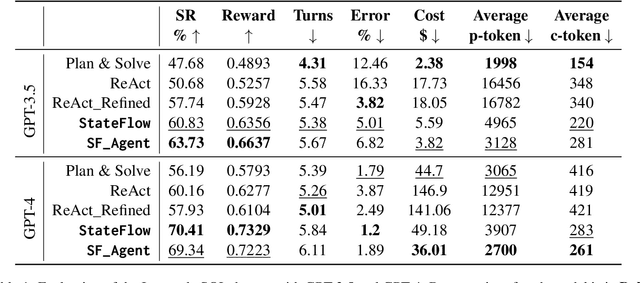
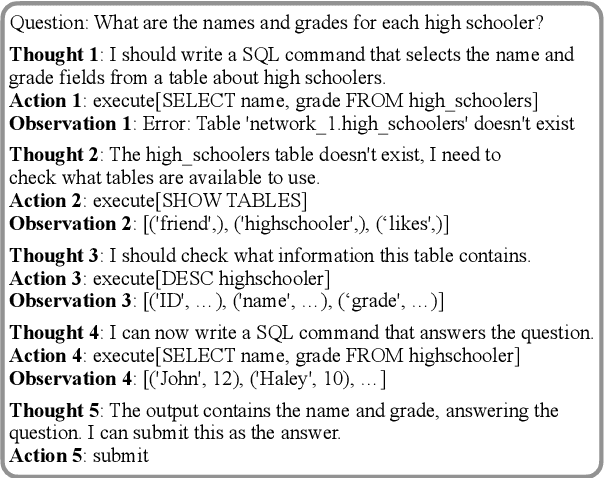
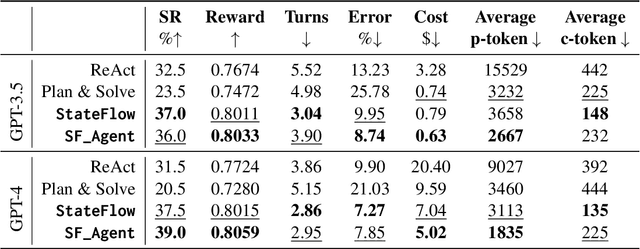
Abstract:It is a notable trend to use Large Language Models (LLMs) to tackle complex tasks, e.g., tasks that require a sequence of actions and dynamic interaction with tools and environments. In this paper, we propose StateFlow, a novel LLM-based task-solving paradigm that conceptualizes complex task-solving processes backed by LLMs as state machines. With proper construction of states and definition of state transitions, StateFlow grounds the progress of task-solving, ensuring clear tracking and management of LLMs' responses throughout the task-solving process. Within each state, StateFlow allows execution of a series of actions, involving not only the generation of LLM's responses guided by a specific prompt, but also the utilization of external tools as needed. State transitions are controlled by specific rules or decisions made by the LLM, allowing for a dynamic and adaptive progression through the task's pre-defined StateFlow model. Evaluations on the InterCode SQL and Bash benchmarks show that StateFlow significantly enhances LLMs' efficiency.
AutoDefense: Multi-Agent LLM Defense against Jailbreak Attacks
Mar 02, 2024Abstract:Despite extensive pre-training and fine-tuning in moral alignment to prevent generating harmful information at user request, large language models (LLMs) remain vulnerable to jailbreak attacks. In this paper, we propose AutoDefense, a response-filtering based multi-agent defense framework that filters harmful responses from LLMs. This framework assigns different roles to LLM agents and employs them to complete the defense task collaboratively. The division in tasks enhances the overall instruction-following of LLMs and enables the integration of other defense components as tools. AutoDefense can adapt to various sizes and kinds of open-source LLMs that serve as agents. Through conducting extensive experiments on a large scale of harmful and safe prompts, we validate the effectiveness of the proposed AutoDefense in improving the robustness against jailbreak attacks, while maintaining the performance at normal user request. Our code and data are publicly available at https://github.com/XHMY/AutoDefense.
AutoGen: Enabling Next-Gen LLM Applications via Multi-Agent Conversation Framework
Aug 16, 2023Abstract:This technical report presents AutoGen, a new framework that enables development of LLM applications using multiple agents that can converse with each other to solve tasks. AutoGen agents are customizable, conversable, and seamlessly allow human participation. They can operate in various modes that employ combinations of LLMs, human inputs, and tools. AutoGen's design offers multiple advantages: a) it gracefully navigates the strong but imperfect generation and reasoning abilities of these LLMs; b) it leverages human understanding and intelligence, while providing valuable automation through conversations between agents; c) it simplifies and unifies the implementation of complex LLM workflows as automated agent chats. We provide many diverse examples of how developers can easily use AutoGen to effectively solve tasks or build applications, ranging from coding, mathematics, operations research, entertainment, online decision-making, question answering, etc.
Unified Off-Policy Learning to Rank: a Reinforcement Learning Perspective
Jun 13, 2023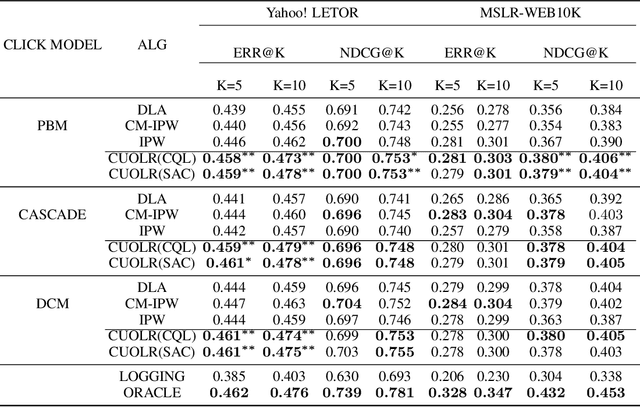
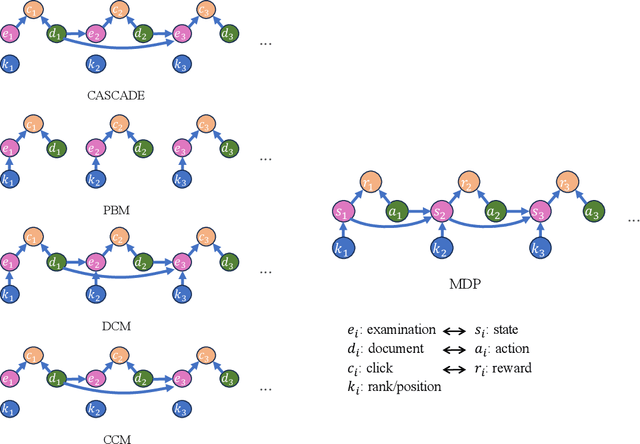

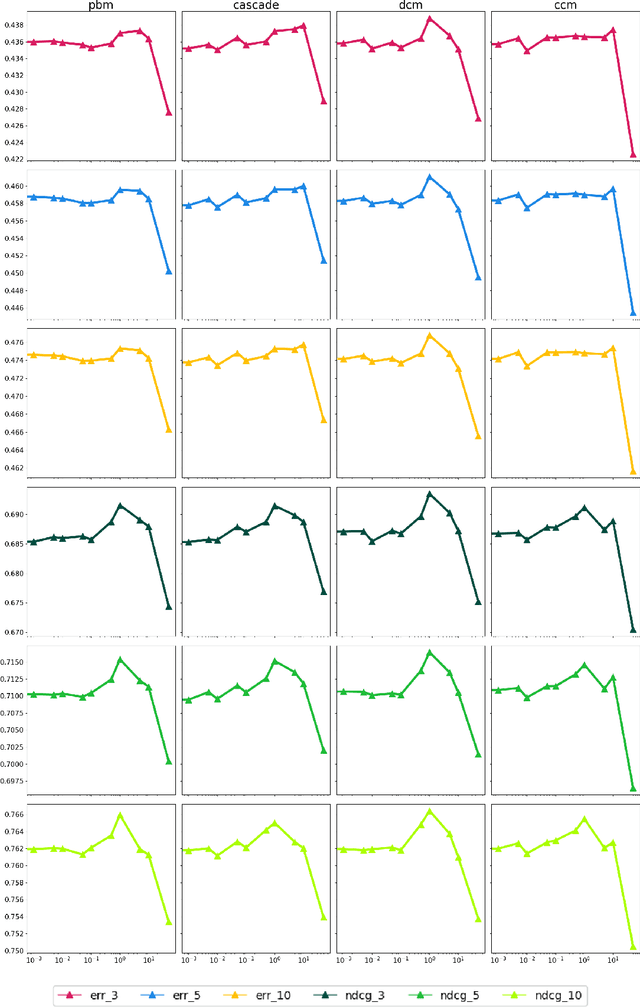
Abstract:Off-policy Learning to Rank (LTR) aims to optimize a ranker from data collected by a deployed logging policy. However, existing off-policy learning to rank methods often make strong assumptions about how users generate the click data, i.e., the click model, and hence need to tailor their methods specifically under different click models. In this paper, we unified the ranking process under general stochastic click models as a Markov Decision Process (MDP), and the optimal ranking could be learned with offline reinforcement learning (RL) directly. Building upon this, we leverage offline RL techniques for off-policy LTR and propose the Click Model-Agnostic Unified Off-policy Learning to Rank (CUOLR) method, which could be easily applied to a wide range of click models. Through a dedicated formulation of the MDP, we show that offline RL algorithms can adapt to various click models without complex debiasing techniques and prior knowledge of the model. Results on various large-scale datasets demonstrate that CUOLR consistently outperforms the state-of-the-art off-policy learning to rank algorithms while maintaining consistency and robustness under different click models.
An Empirical Study on Challenging Math Problem Solving with GPT-4
Jun 08, 2023Abstract:Employing Large Language Models (LLMs) to address mathematical problems is an intriguing research endeavor, considering the abundance of math problems expressed in natural language across numerous science and engineering fields. While several prior works have investigated solving elementary mathematics using LLMs, this work explores the frontier of using GPT-4 for solving more complex and challenging math problems. We evaluate various ways of using GPT-4. Some of them are adapted from existing work, and one is MathChat, a conversational problem-solving framework newly proposed in this work. We perform the evaluation on difficult high school competition problems from the MATH dataset, which shows the advantage of the proposed conversational approach.
HyperTime: Hyperparameter Optimization for Combating Temporal Distribution Shifts
May 28, 2023



Abstract:In this work, we propose a hyperparameter optimization method named \emph{HyperTime} to find hyperparameters robust to potential temporal distribution shifts in the unseen test data. Our work is motivated by an important observation that it is, in many cases, possible to achieve temporally robust predictive performance via hyperparameter optimization. Based on this observation, we leverage the `worst-case-oriented' philosophy from the robust optimization literature to help find such robust hyperparameter configurations. HyperTime imposes a lexicographic priority order on average validation loss and worst-case validation loss over chronological validation sets. We perform a theoretical analysis on the upper bound of the expected test loss, which reveals the unique advantages of our approach. We also demonstrate the strong empirical performance of the proposed method on multiple machine learning tasks with temporal distribution shifts.
Improving Policy Optimization with Generalist-Specialist Learning
Jun 26, 2022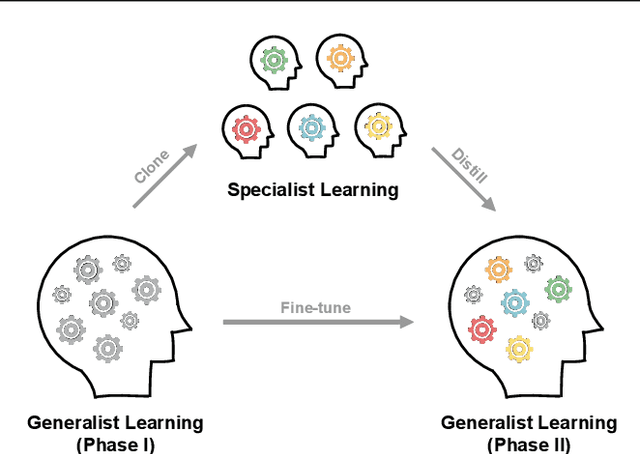

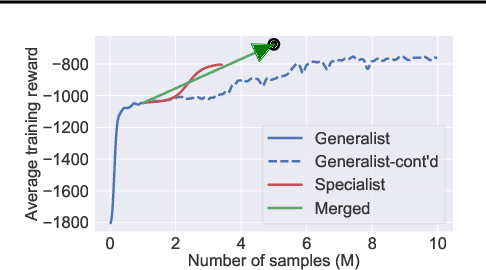

Abstract:Generalization in deep reinforcement learning over unseen environment variations usually requires policy learning over a large set of diverse training variations. We empirically observe that an agent trained on many variations (a generalist) tends to learn faster at the beginning, yet its performance plateaus at a less optimal level for a long time. In contrast, an agent trained only on a few variations (a specialist) can often achieve high returns under a limited computational budget. To have the best of both worlds, we propose a novel generalist-specialist training framework. Specifically, we first train a generalist on all environment variations; when it fails to improve, we launch a large population of specialists with weights cloned from the generalist, each trained to master a selected small subset of variations. We finally resume the training of the generalist with auxiliary rewards induced by demonstrations of all specialists. In particular, we investigate the timing to start specialist training and compare strategies to learn generalists with assistance from specialists. We show that this framework pushes the envelope of policy learning on several challenging and popular benchmarks including Procgen, Meta-World and ManiSkill.
 Add to Chrome
Add to Chrome Add to Firefox
Add to Firefox Add to Edge
Add to Edge